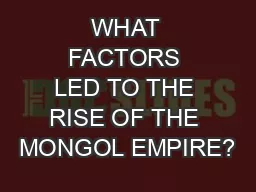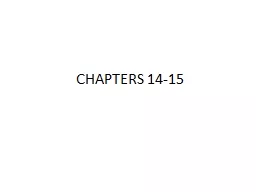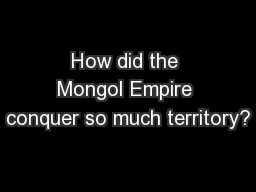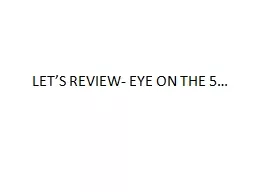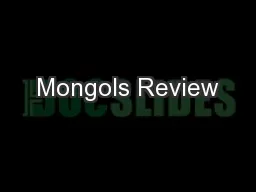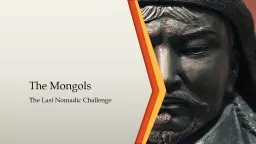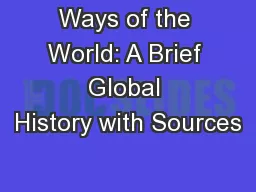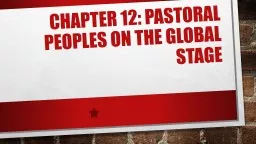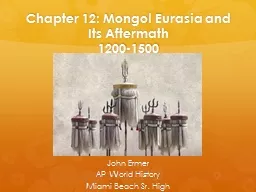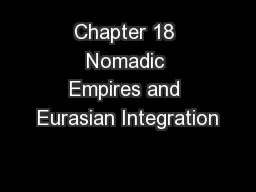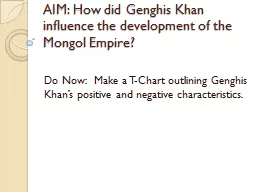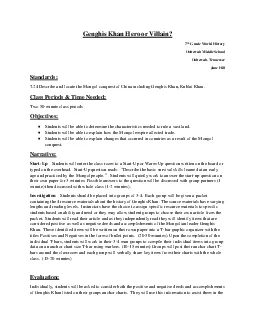PPT-WHAT FACTORS LED TO THE RISE OF THE MONGOL EMPIRE?
Author : alexa-scheidler | Published Date : 2017-10-10
Where are the Steppes of Central Asia What civilizations do you suppose these warrior societies came into contact with INDIA CHINA RUSSIA Steppes belt of grasslands
Presentation Embed Code
Download Presentation
Download Presentation The PPT/PDF document "WHAT FACTORS LED TO THE RISE OF THE MONG..." is the property of its rightful owner. Permission is granted to download and print the materials on this website for personal, non-commercial use only, and to display it on your personal computer provided you do not modify the materials and that you retain all copyright notices contained in the materials. By downloading content from our website, you accept the terms of this agreement.
WHAT FACTORS LED TO THE RISE OF THE MONGOL EMPIRE?: Transcript
Download Rules Of Document
"WHAT FACTORS LED TO THE RISE OF THE MONGOL EMPIRE?"The content belongs to its owner. You may download and print it for personal use, without modification, and keep all copyright notices. By downloading, you agree to these terms.
Related Documents

